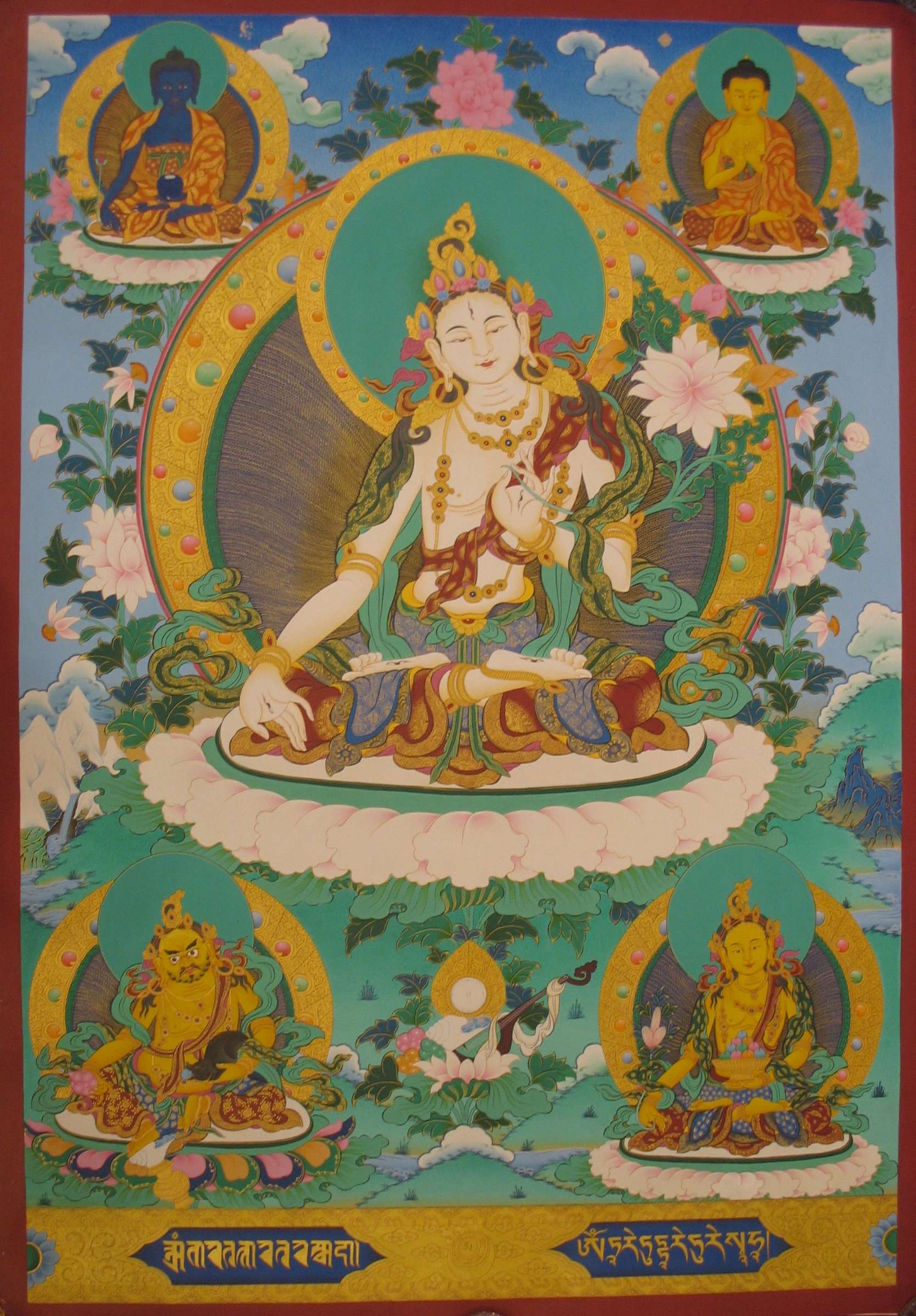

White Tara Tibetan Thangka Art
White Tara Tibetan Thangka Art is hand-painted in the Himalayan country of Nepal by Master Thangka Artist.
White Tara is a representation of compassion, and she is pictured as having seven eyes to symbolize the compassionate mind's watchfulness.
Gesture and Posture of White Tara
She is depicted seating in a lotus position with the soles of her feet pointing upward.
Her left-hand holds a beautiful blue lotus flower and her right hand is extended to her knee in the mudra of compassion.
She has seven eyes symbolizing her power to see human afflictions. The name Tara means “the one who saves” and she has the power to alleviate people from suffering.
Another power of White Tara is to generate energy for good health and longevity.
To present a newborn baby with a thangka painting of White Tara is considered to bring good fortune and wish a long life ahead.
Why Pray White Tara?
Pray to White Tara for protection, healing, and immortality. She gives healing to our wounds, either it is the unhappy mind or physically ill bodies.
Tara, like a mother to her son, is very similar to the sentient beings. She quickly fulfills our wishes and brings us happiness and long life, as well as help us grow wisdom.
One has the power to eliminate barriers to your life and to extend your life by taking refuge in Tara and by practicing meditation, visualization, and having confidence.
White Tara has 7 eyes, 3 in her face and 4 on her hand palms and foot soles.
The mantra of White Tara
Om Tare Tuttare Ture Mama Ayur Punye Jnana Pushtim Kuru Ye Soha
What is a thangka?
A thangka is a Tibetan painting that is traditionally used as a support for one’s meditation practice. The imagery depicted in Tibetan paintings provides a guide for the elaborate visualizations that one does in Tibetan Buddhist practice. In Tibetan homes and monasteries, thangkas are considered sacred objects and are often placed above shrines.











